• From the first year of 45ci production • Hugely popular in the late 1920s and '30s...and it's never stopped • Ideal Police Special especially when in pursuit • Beautifully restored example, now rare in this condition Following the end of World War 1, overall motorcycle sales were disappointing, especially at Indian. Relying too heavily on lucrative military contracts, the company left their dealerships hanging for several years and didn't introduce any new motorcycles. What the company offered was the spring cradle framed Powerplus. Its performance was 'adequate' but the bike had become a bit stodgy with its outdated appearance and tall chassis. What was needed was a new machine for the everyday rider who was perhaps intimidated by the tallness of the Powerplus. The duty to design a new motorcycle fell onto Indian's Chief Engineer, Charles B. Franklin. His vision was to have a smaller, stouter and lighter motorcycle that would attract new riders to the Wigwam. The new motorcycle would retain the sidevalve engine but would be smaller. The reasoning was the sidevalve motor was tidy, less expensive to manufacture and operate, and had decent power, even for a small motor. What set the new motor apart was it was compartmentalized to reduce its size, with the transmission secured to the crankcases with a cast aluminum primary case. Expensive but highly durable helical gears joined the transmission to the engine. Until that time, motorcycle frames were flat, with heavy single down tubes in both the front and rear of the chassis and with single tubes for the top rails. By creating a double down tube frame, the chassis would be stiffer and lighter because a shorter frame also allowed thinner wall tubing. Christened the 'Scout', it was the first time Indian themed names were given to the company's motorcycles. The new 37ci Scout proved to be a sensational motorcycle when it was debuted in late 1919. In 1927 Indian upped the capacity to 45ci/750cc. A light middleweight motorcycle, it was attractive to both new and seasoned riders. Like the Ford Model T, it became the 'every man's motorcycle'. It was rugged and dependable, fresh to the eye in styling and proved to be a quite durable mount. It would cruise at 50mph dependably and even set a world's record in 1920, covering 1,114 miles in 24 hours in Australia. It was indeed a very attractive motorcycle for police pursuit. Offered from a private collection, this 'short frame' Indian Scout (1927) was restored recently and was last ridden (around the block) in September 2019. Rebuilt with new valves and pistons into nickel plated barrels, the engine is described as very smooth while the gears are said to engage easily. Other noteworthy features include a correct DLX 51 carburetor, correct Splitdorf magneto, and re-laced wheels shod with new Coker balloon tires. It has the twin rear brake set-up (foot and hand brake) which was the full export option and it should be noted that the generator is not in use and thus the electrics are 'total loss'.
• From the first year of 45ci production • Hugely popular in the late 1920s and '30s...and it's never stopped • Ideal Police Special especially when in pursuit • Beautifully restored example, now rare in this condition Following the end of World War 1, overall motorcycle sales were disappointing, especially at Indian. Relying too heavily on lucrative military contracts, the company left their dealerships hanging for several years and didn't introduce any new motorcycles. What the company offered was the spring cradle framed Powerplus. Its performance was 'adequate' but the bike had become a bit stodgy with its outdated appearance and tall chassis. What was needed was a new machine for the everyday rider who was perhaps intimidated by the tallness of the Powerplus. The duty to design a new motorcycle fell onto Indian's Chief Engineer, Charles B. Franklin. His vision was to have a smaller, stouter and lighter motorcycle that would attract new riders to the Wigwam. The new motorcycle would retain the sidevalve engine but would be smaller. The reasoning was the sidevalve motor was tidy, less expensive to manufacture and operate, and had decent power, even for a small motor. What set the new motor apart was it was compartmentalized to reduce its size, with the transmission secured to the crankcases with a cast aluminum primary case. Expensive but highly durable helical gears joined the transmission to the engine. Until that time, motorcycle frames were flat, with heavy single down tubes in both the front and rear of the chassis and with single tubes for the top rails. By creating a double down tube frame, the chassis would be stiffer and lighter because a shorter frame also allowed thinner wall tubing. Christened the 'Scout', it was the first time Indian themed names were given to the company's motorcycles. The new 37ci Scout proved to be a sensational motorcycle when it was debuted in late 1919. In 1927 Indian upped the capacity to 45ci/750cc. A light middleweight motorcycle, it was attractive to both new and seasoned riders. Like the Ford Model T, it became the 'every man's motorcycle'. It was rugged and dependable, fresh to the eye in styling and proved to be a quite durable mount. It would cruise at 50mph dependably and even set a world's record in 1920, covering 1,114 miles in 24 hours in Australia. It was indeed a very attractive motorcycle for police pursuit. Offered from a private collection, this 'short frame' Indian Scout (1927) was restored recently and was last ridden (around the block) in September 2019. Rebuilt with new valves and pistons into nickel plated barrels, the engine is described as very smooth while the gears are said to engage easily. Other noteworthy features include a correct DLX 51 carburetor, correct Splitdorf magneto, and re-laced wheels shod with new Coker balloon tires. It has the twin rear brake set-up (foot and hand brake) which was the full export option and it should be noted that the generator is not in use and thus the electrics are 'total loss'.
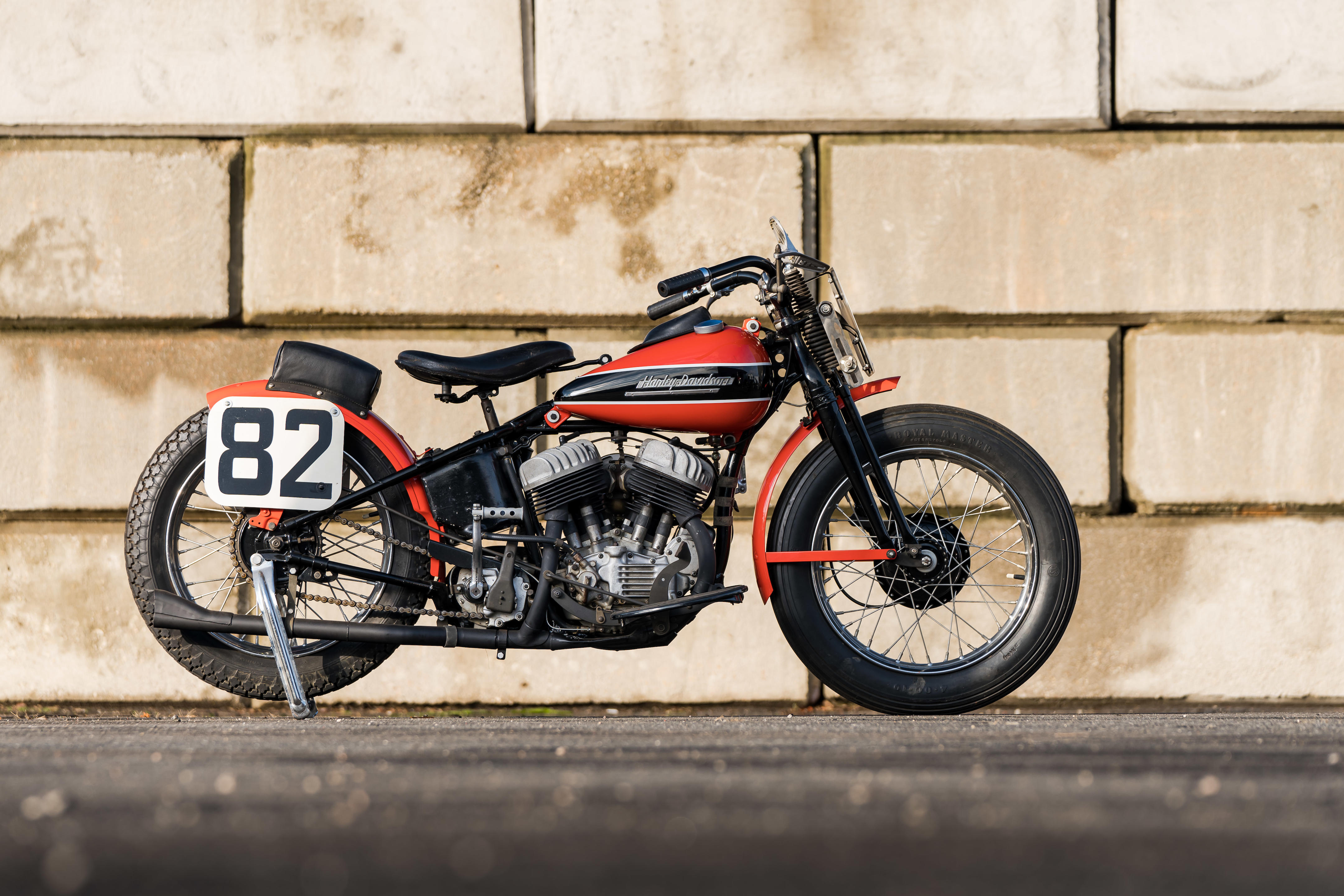
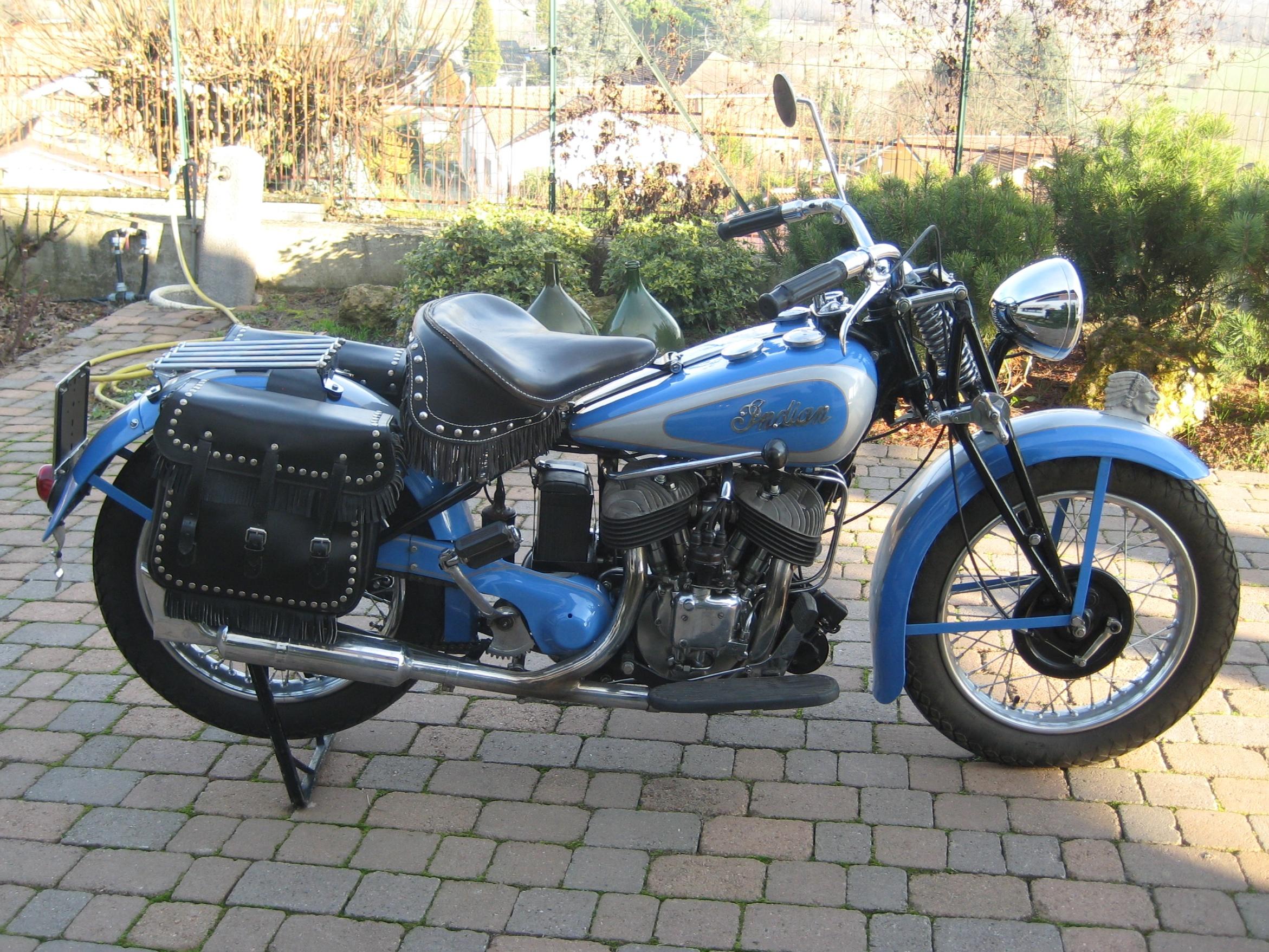

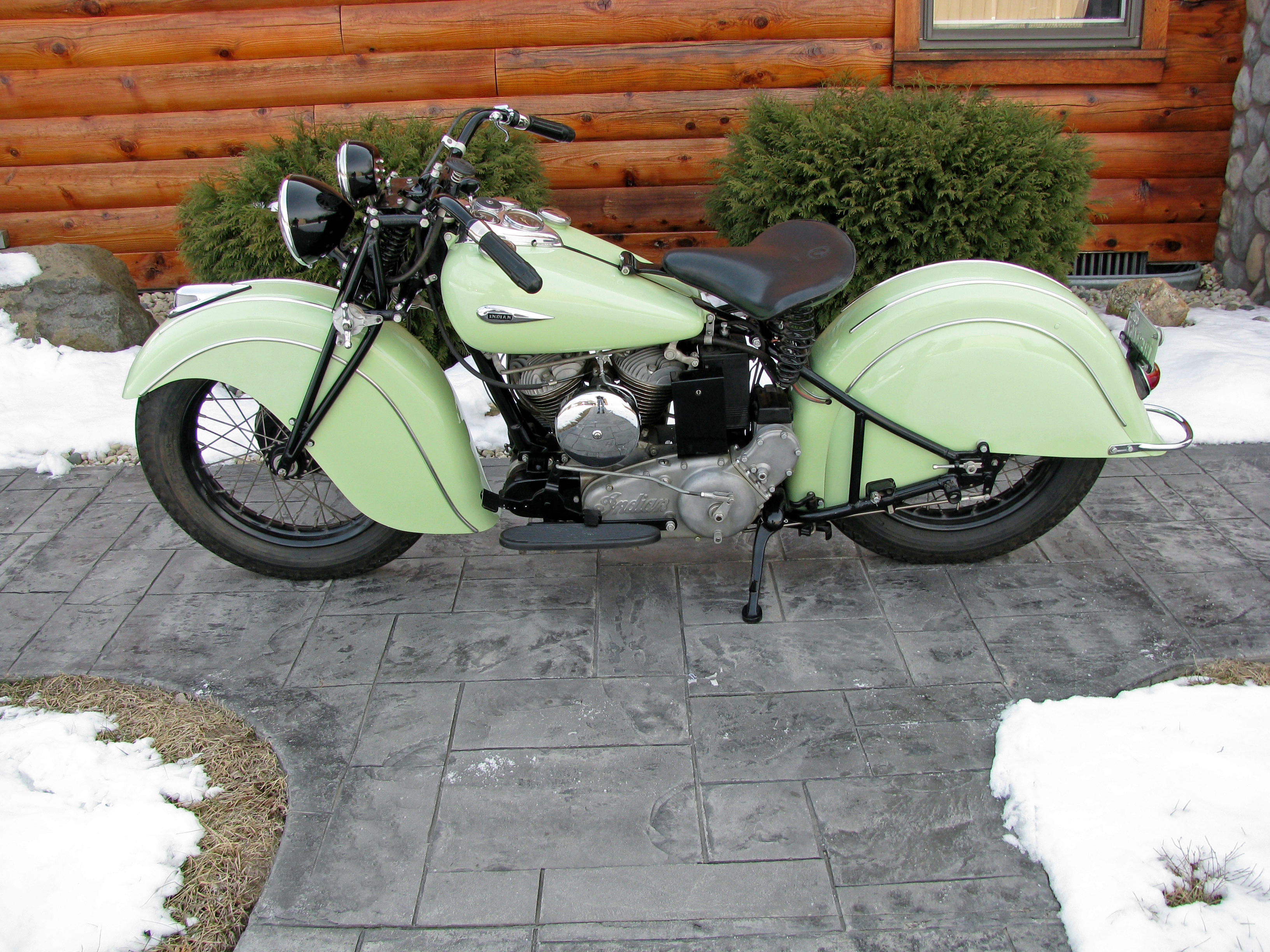
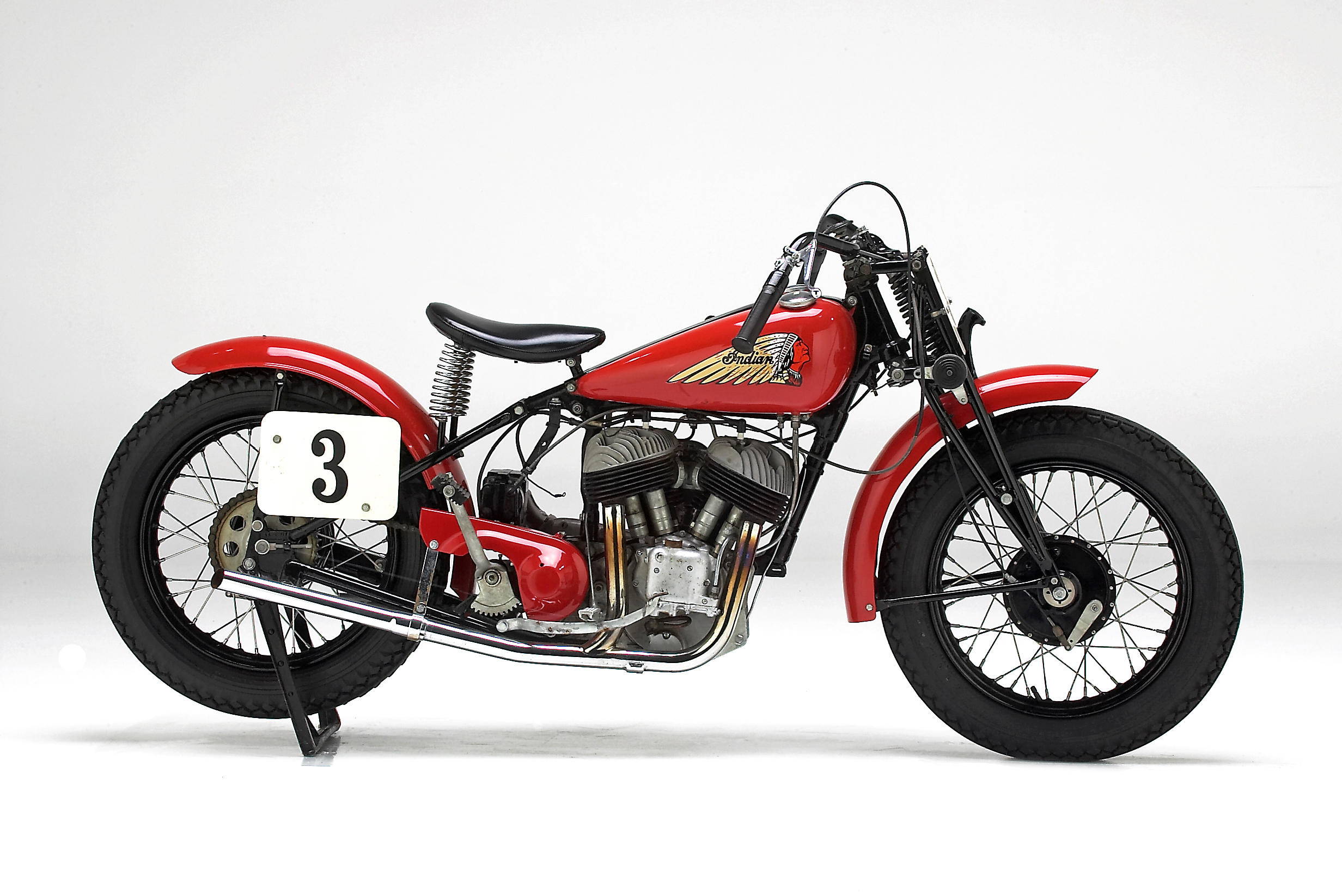

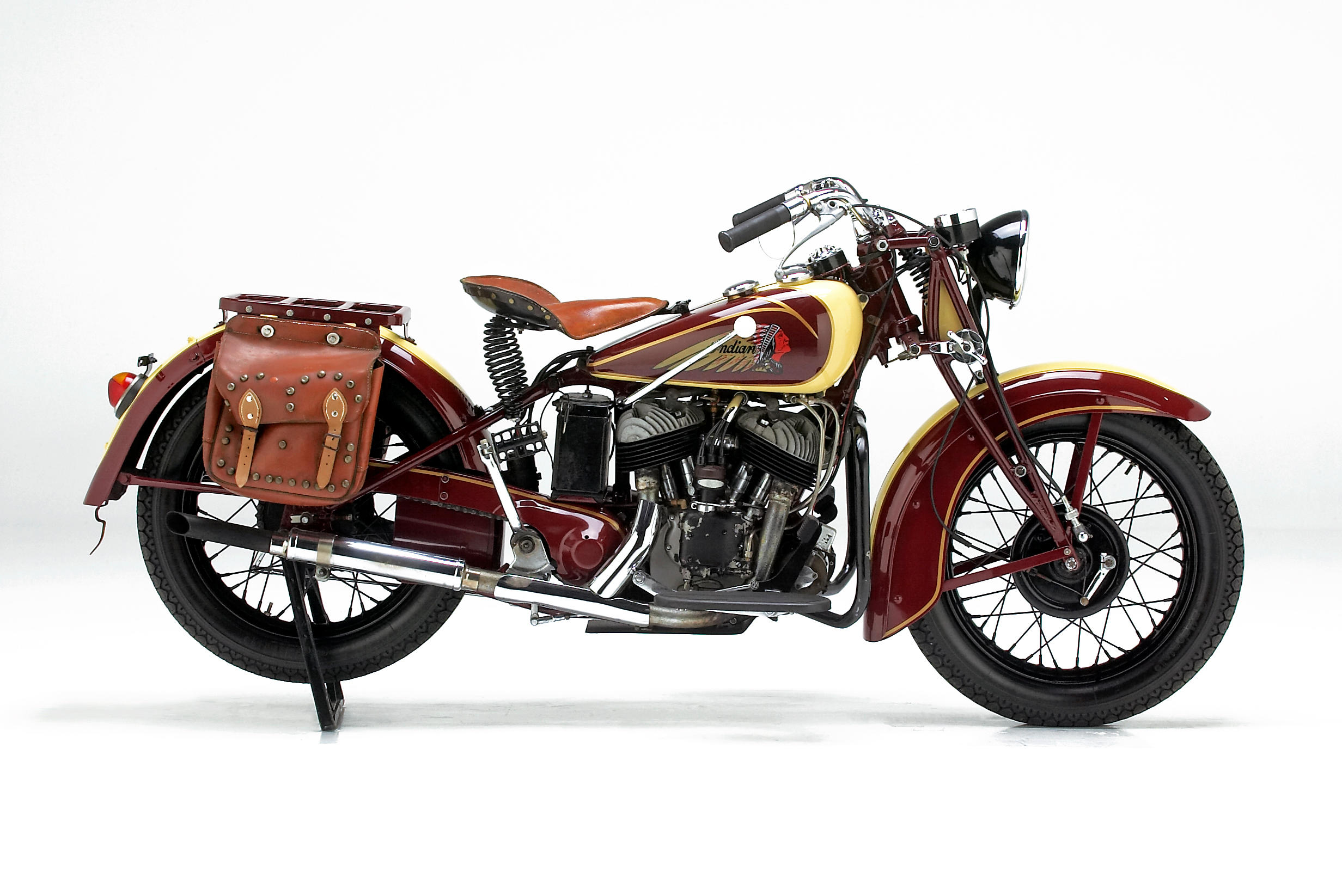
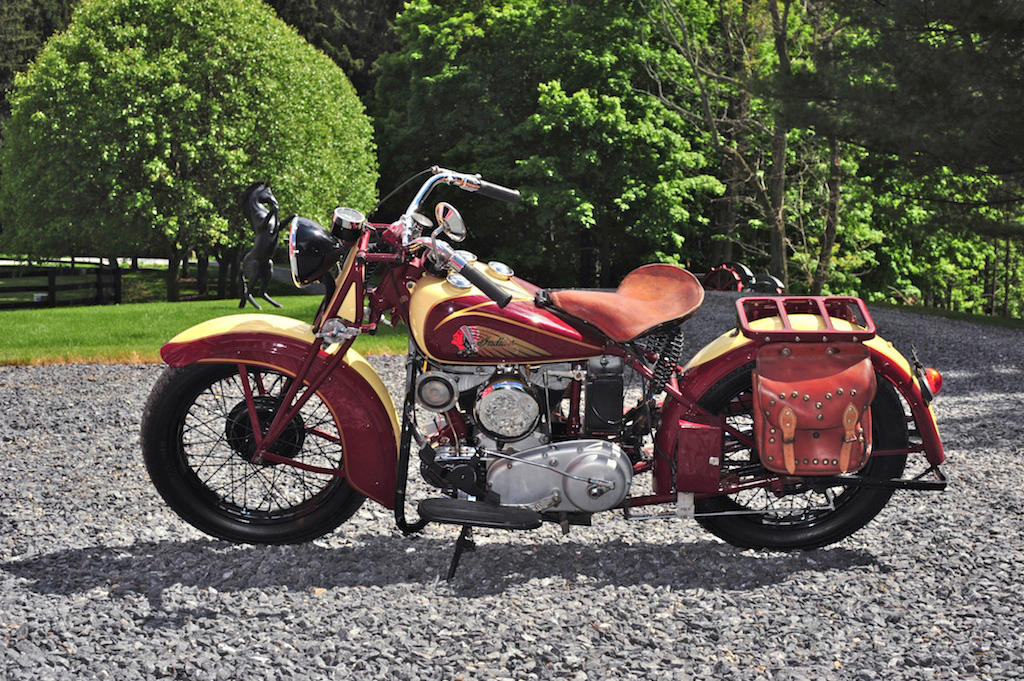
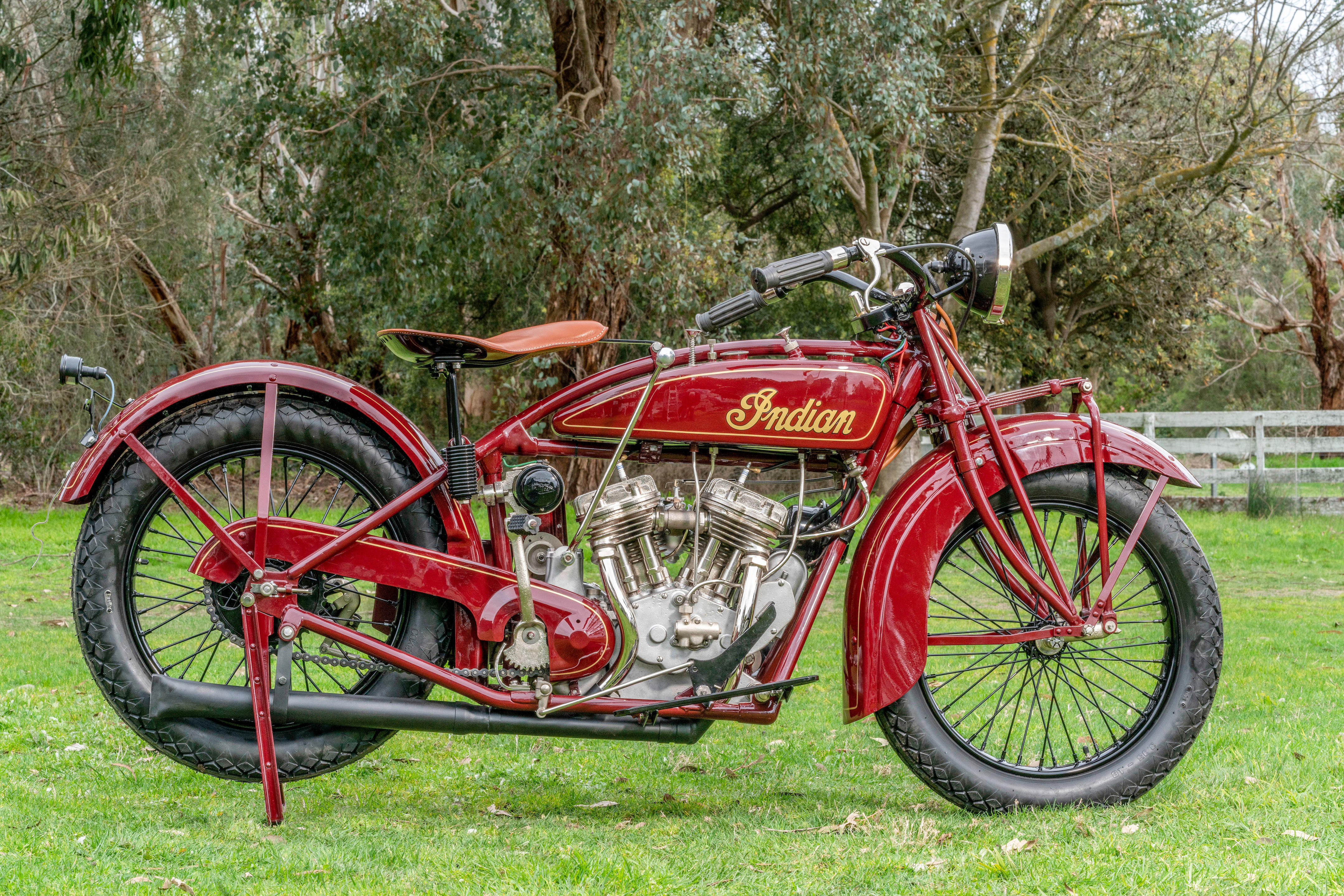
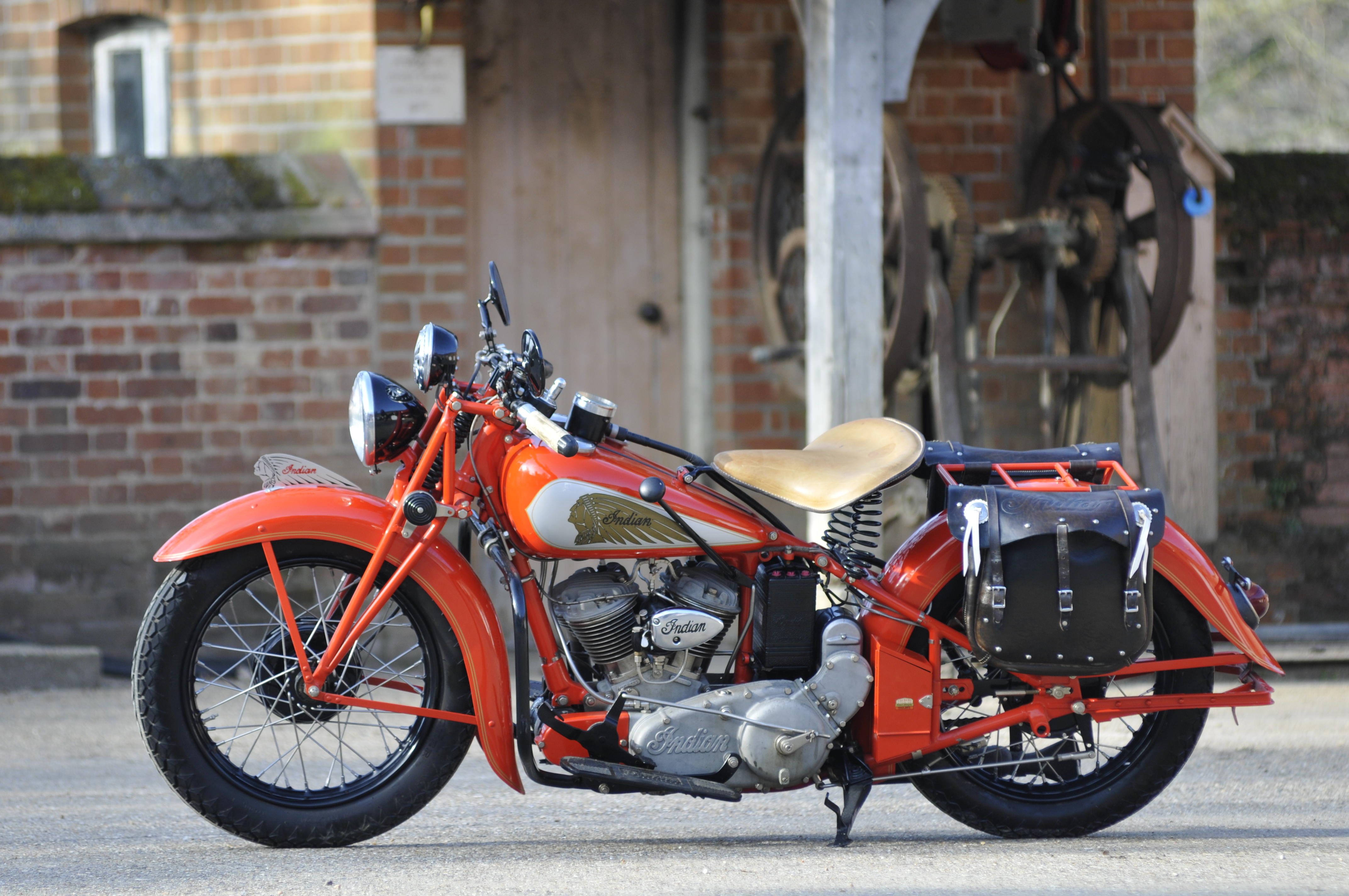
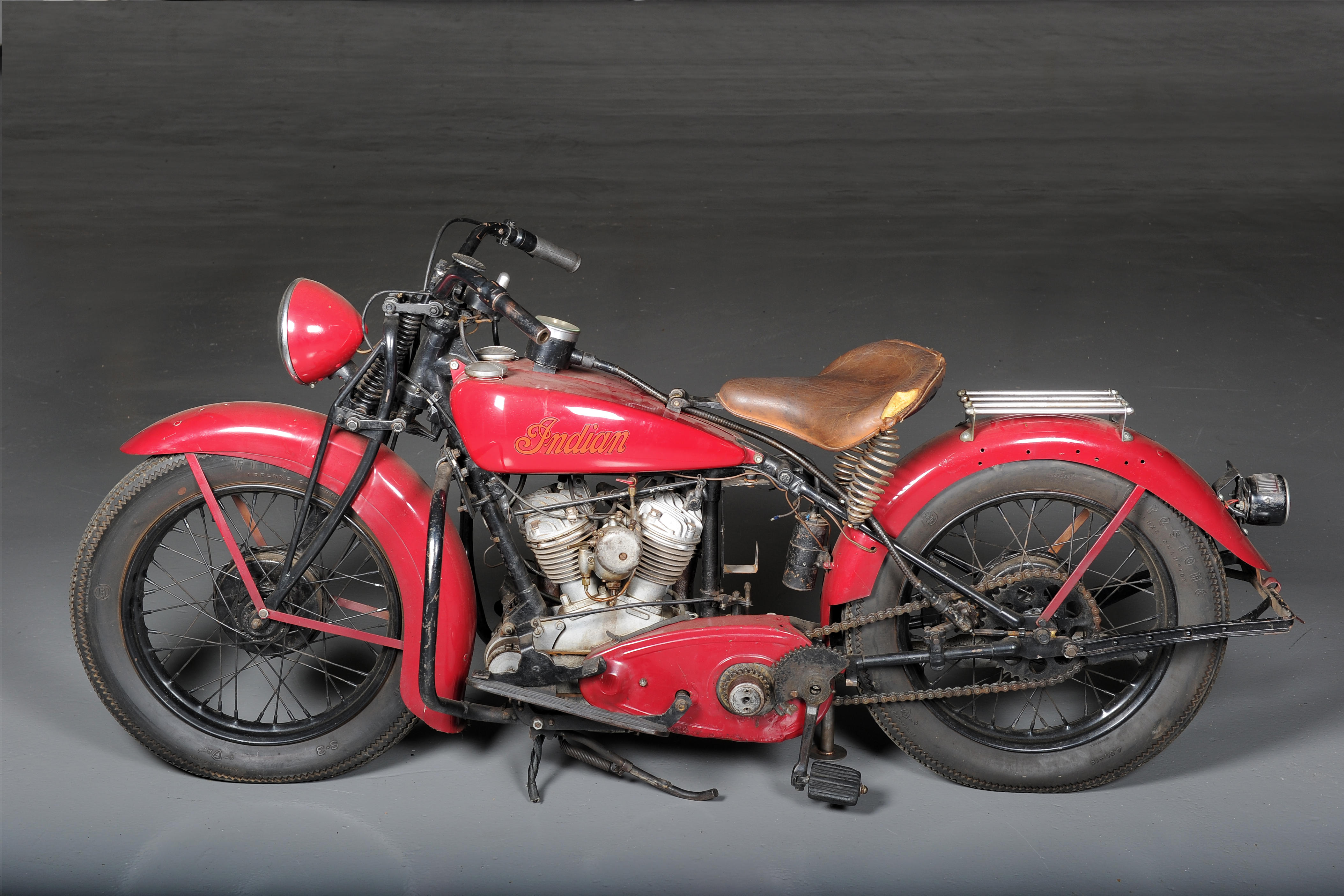



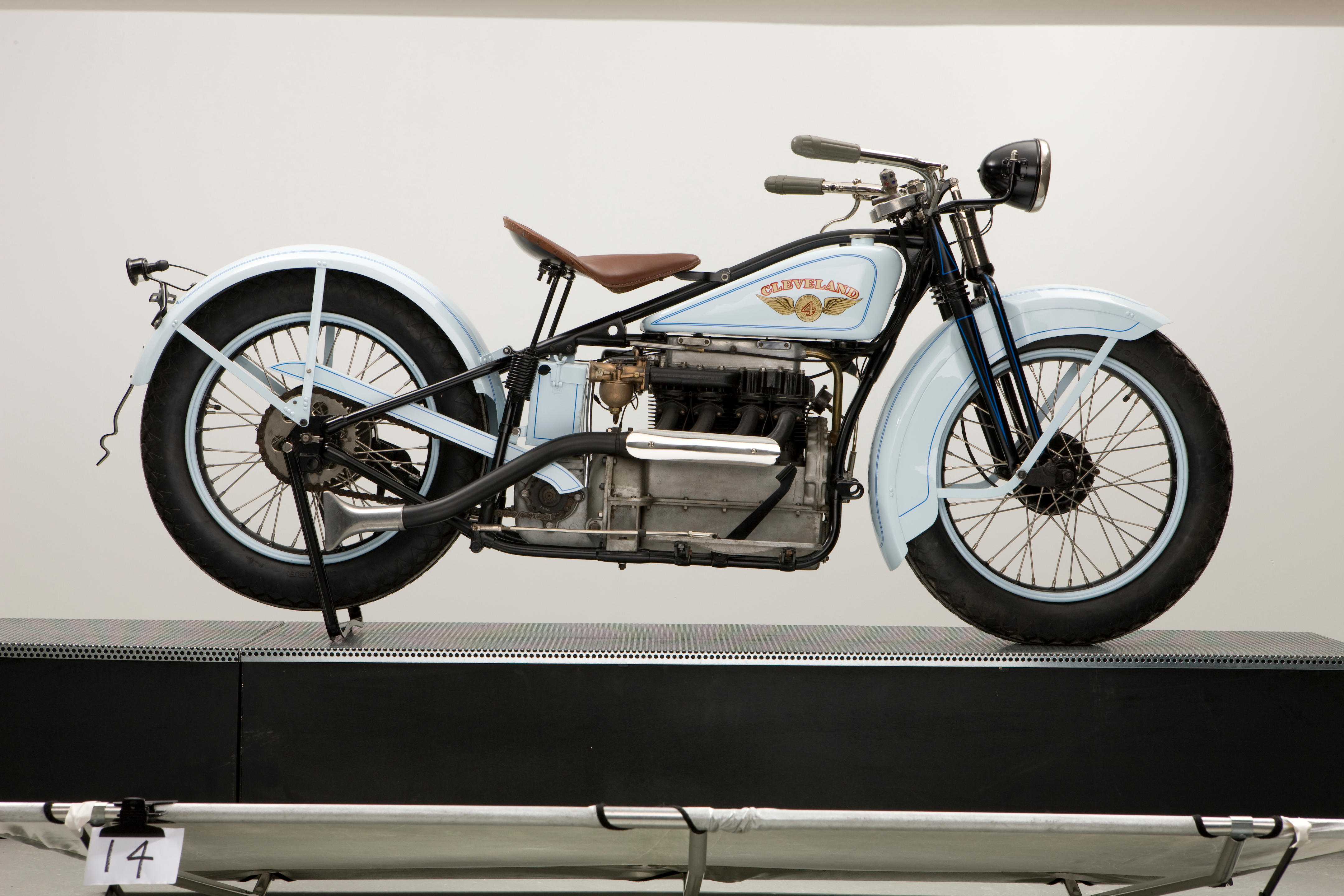
Try LotSearch and its premium features for 7 days - without any costs!
Be notified automatically about new items in upcoming auctions.
Create an alert